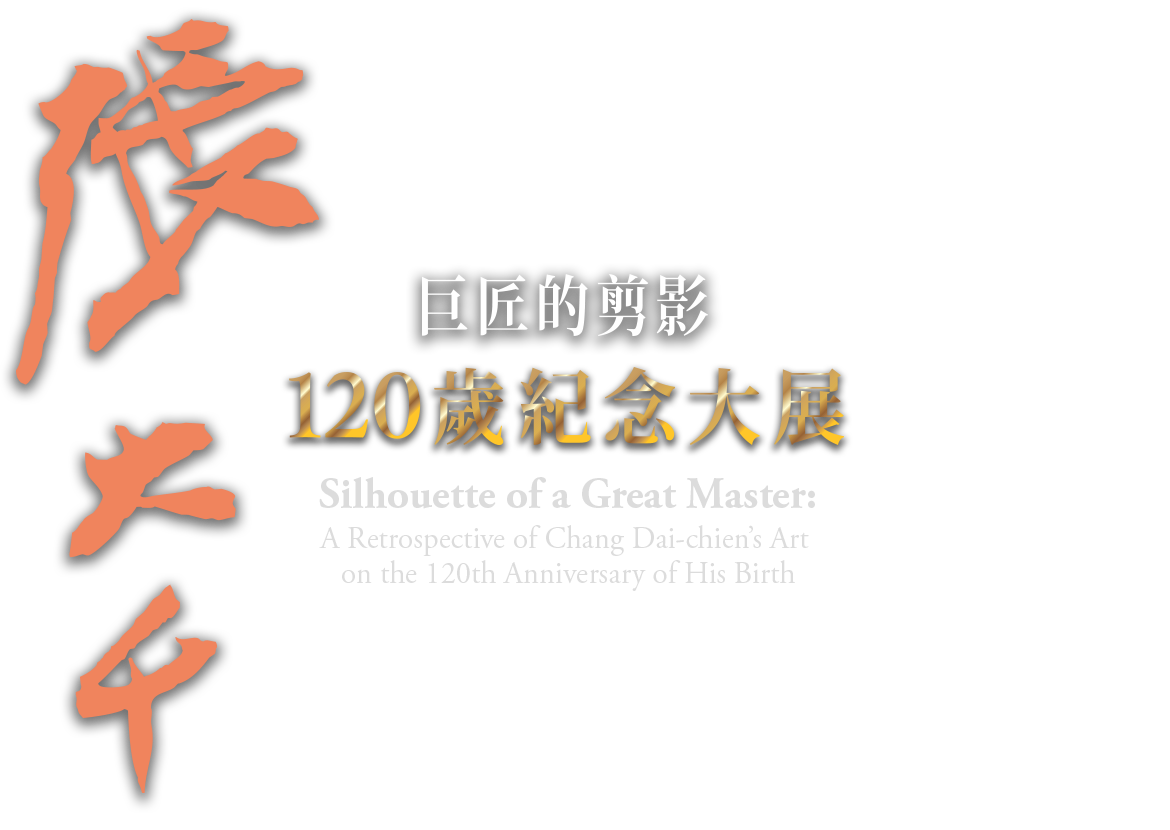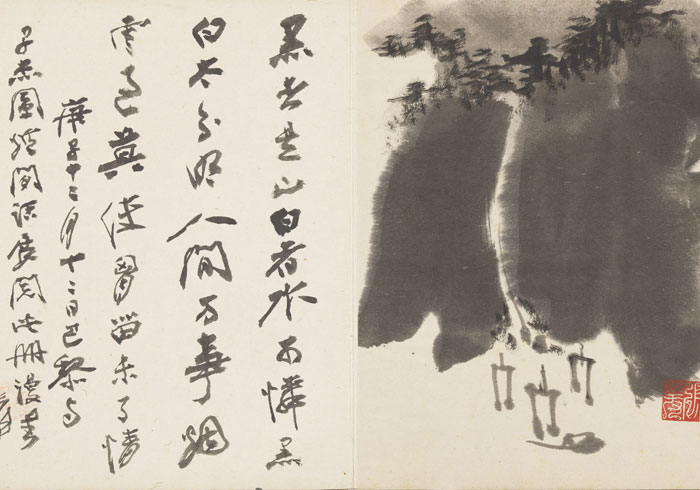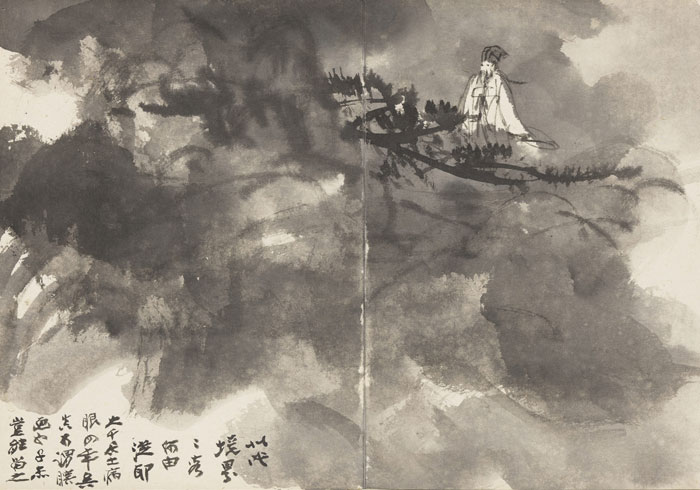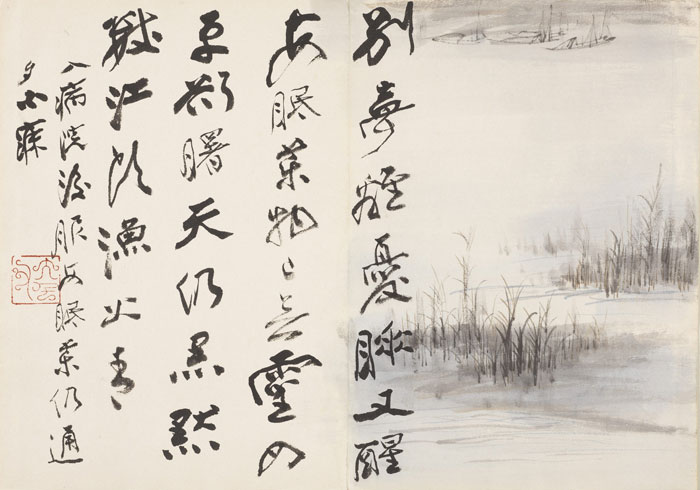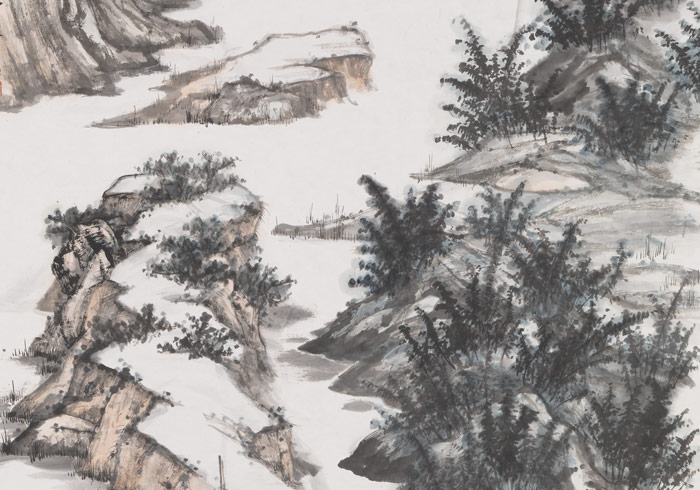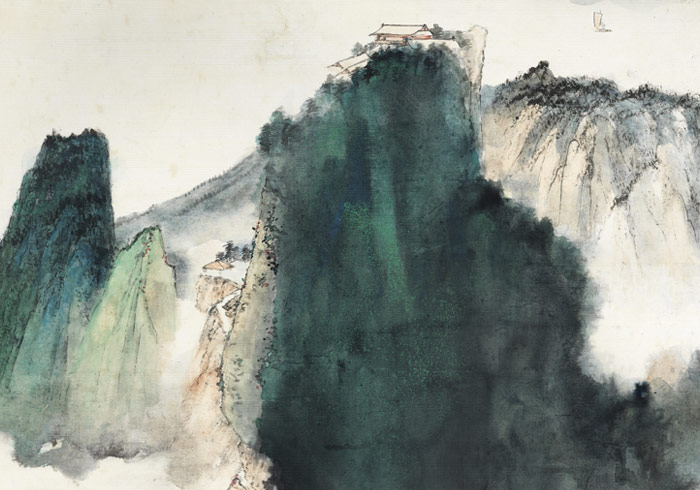The flourishing market for painting and calligraphy had a profound impact on the production of art. Although such traditional forms of patronage, such as personal connections and making direct or indirect requests for art, still existed, it became increasingly common in late-Qing Shanghai to go to art shops and make a deal. These art shops even had a "profit scale" (price standards) for particular artists so that a customer could pick and choose a desired work at a set price. Consequently, the buyer did not have to meet the artist as art production became increasingly commercialized. In the late Qing, artists also often formed associations, some of which established a price list for cooperative works, thereby promoting the development of artistic collaboration. The selection of works in this section includes Wu Tao's "Scenes of Traveling in the Past," which represents traditional patronage, and Ren Yi's "Chen Ping Divides the Meat" done for the art market. Several collaborative paintings are also found here, such as "Going to the Peach Gathering of Immortals in Collaboration." Featuring eleven artists, this work is the one in the National Palace Museum with the most people involved in its production. Finally, Wu Changshi's "Red and White Chrysanthemums" was signed for a Japanese man named "Mr. Hashimoto," offering a glimpse at the overseas spread of Shanghai painting.
Cursory Sketches by Dai-chien (I)
- Chang Dai-chien (1899-1983), Republican period
- Album leaf, ink (and colors) on paper, 23.8 x 35.8 cm
This album is from the collection of the National Museum of History. *For another leaf from the album, see "My Little Monkey and I" on display in Gallery 208.
Cursory Sketches by Dai-chien (II)
- Chang Dai-chien (1899-1983), Republican period
- Album leaf, ink (and colors) on paper, 23.8 x 35.8 cm
This album is from the collection of the National Museum of History. *For another leaf from the album, see "Brothers Four and Eight" on display in Gallery 208.
Sketching Away My Worries
- Chang Dai-chien (1899-1983), Republican period
- Album leaf, ink (and colors) on paper, 42.1 x 59.8 cm
This album is from the collection of the National Museum of History. *For another leaf from the album, see "Self-Portrait" on display in Gallery 208.
Scenery at the Garden of Eight Virtues
- Chang Dai-chien (1899-1983), Republican period
- Hanging scroll, ink and colors on paper, 173.3 x 94 cm
Mountains High, Rivers Long
- Chang Dai-chien (1899-1983), Republican period
- Hanging scroll, ink and colors on paper, 192.5 x 102.5 cm
The recipient of the painting, Mr. Chang Chun, donated it to the National Palace Museum.
